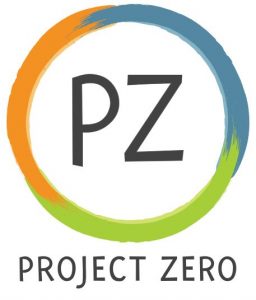A THINKING ROUTINE FROM PROJECT ZERO, HARVARD GRADUATE SCHOOL OF EDUCATION
Purpose: What kind of thinking does this routine encourage?
This routine encourages students to make careful observations and thoughtful interpretations. It helps stimulate curiosity and sets the stage for inquiry.
Application: When and where can I use it?
Use this routine when you want students to think carefully about why something looks the way it does or is the way it is. Use the routine with a relevant object (such as an artwork, image, artifact, chart, video, etc.) at the beginning of a new unit to motivate student interest, or try it with an object that connects to a topic during the unit of study. Consider using the routine with an interesting object near the end of a unit to encourage students to further apply their knowledge and ideas.
Launch: What are some tips for starting and using this routine?
Once you present the object to your students, give them time to observe it. It may be useful to explain that they are first going to describe exactly what they see, not what they think they see. In the second step when students describe what they think about what they’re seeing, you could ask them follow-up questions like, “What else is going on here?” or “What do you see that makes you say that?” These questions help move students away from giving unsupported opinions encouraging them instead to use evidence to explain their thoughts. In the third step, help students articulate what they are wondering by asking them what questions remain for them.
The routine generally works well in a group discussion. You may want to document the students’ responses and post them in a place where all students can see them to encourage future consideration. When doing this as a group, you may want to ask students to try the routine quietly on their own first (perhaps documenting their own thinking in writing) before discussing in a group.
Poster with the three questions: See think wonder (PDF, 280 kb)
This thinking routine was developed as part of the Visible Thinking
project at Project Zero, Harvard Graduate School of Education.
Explore more Thinking Routines at pz.harvard.edu/thinking-routines

 Be barnen mål olika saker och i olika takt. Då kommer ljudet fram. Hur låter det om man målar en cirkel kontra en fyrkant. Be barnen att måla som det låter och låt dem upptäcka vad som händer. De större barnen kan måla i blindo. Fäst olika antal bjällror på penslarna – från bara någon till många.
Be barnen mål olika saker och i olika takt. Då kommer ljudet fram. Hur låter det om man målar en cirkel kontra en fyrkant. Be barnen att måla som det låter och låt dem upptäcka vad som händer. De större barnen kan måla i blindo. Fäst olika antal bjällror på penslarna – från bara någon till många.

